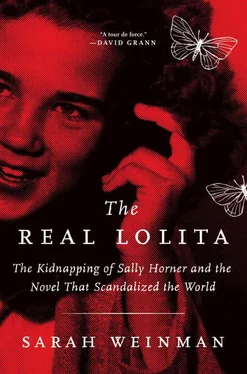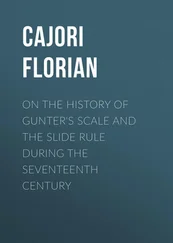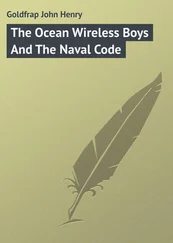Later in the scene, Nabokov makes a repeated reference to a “Dr. Fogg,” a doctor deemed to be the best to treat Dolores’s illness. It turns out “Fogg” is a disguise for Clare Quilty, who uses that alias but arrives on the scene wearing the mask of the railway robber, Gabriel Goff. Fogg, of course, was an early alias of Frank La Salle.
I could chalk up the use of these names to Nabokov’s merry-trickster side, noting that “Goff” and “Fogg” are inversions of each other. The presence of doubles and masks certainly bolsters this theory. But because the Sally Horner parenthetical reference was excised from the film script—there was no reason to preserve a textual reference for a visual medium, after all—this name-inversion trick read to me as if Nabokov wanted to preserve the link to Sally’s story in some fashion.
JAMES MASON SIGNED ON as Humbert Humbert, while Peter Sellers and Shelley Winters were cast as Clare Quilty and Charlotte Haze, respectively. The final piece of the Lolita film puzzle was choosing the girl to play Dolores Haze, a search avidly covered by newspapers and magazines around the world. One gossip item speculated that Mason’s eleven-year-old daughter, Portland, might be cast. Tuesday Weld, already an established television and film star at seventeen, was a serious contender, much to Nabokov’s chagrin (“a graceful ingenue but not my idea of Lolita”), but she declined the role, famously saying, “I didn’t have to play Lolita. I was Lolita.”
When Sue Lyon, age fourteen, was ultimately cast, it was with Nabokov’s enthusiastic approval. He did not want a girl so near to Lolita’s true age for the film, and he agreed with Kubrick that a girl who looked closer to sixteen, as Lyon did, would circumvent the censors. Lolita could not go forward with an “X” rating, or worse, no rating at all. When Lyon began shooting Lolita in 1961, European newspapers followed her around taking photographs of her on set, buying food, or taking a nap. Typical paparazzi behavior, but it seemed that much more invasive because they were chasing a teenager playing the love interest of a much older man.
However Kubrick, as director, and Nabokov, as author, envisioned the reception of Lolita the film upon its release in the summer of 1962, they were disappointed. The infamous Bert Stern photograph of Lyon, sucking on a lollipop and wearing heart-shaped glasses, shaped public perception. So did the tagline “How Did They Ever Make a Movie of Lolita ?” which caused a number of critics to answer: they didn’t. Lyon was too old, unconvincing save for the scenes where she has transformed into the pregnant Mrs. Dick Schiller. Kubrick blamed the censors for his creative misfire. Nabokov, more generously, judged Kubrick’s vision “a first-rate film with magnificent actors.” While the movie did all right at the box office—$9.25 million grossed on a $2 million budget—the critical reception cast a pall.
As time went on, Lolita was adapted repeatedly—again as a 1997 film, as a 1981 play by Edward Albee, as a 1990s Russian-language opera, and even as a musical. The history of these adaptations, nearly all by middle-aged men, indicate how far out of touch they were from the novel’s core depiction of sexual abuse. Reading Lolita allowed people to make their own judgments, rightly or wrongly. Seeing or hearing her sing, dance, or speak provoked far more uncomfortable responses, which led to a host of failed projects. That anyone, let alone those with a financial stake, could think visual and theatrical depictions of Lolita would be successful seems laughable in hindsight.
The most ludicrous idea was Lolita, My Love, the 1971 musical version. And yet it boasted an A-list group of creators, with lyrics and libretto by Alan Jay Lerner, who wrote the smash hit My Fair Lady, and a score by John Barry (of James Bond theme fame). Nabokov, who could hardly abide music, gave his approval for the musical because even he was aware of Lerner’s and Barry’s past successes. But the result never reached Broadway. Savage reviews of the original Boston production closed it down in early 1971, and a revived version staged in Philadelphia a couple of months later—starring future Willy Wonka & the Chocolate Factory star Denise Nickerson, not yet thirteen, as Dolores—yielded more disappointing notices. Nabokov had once told a disapproving interviewer that Lolita, My Love was “in the best of hands.” Once the musical failed, he never spoke of it again.
Lolita also spawned unauthorized sequels that, in different ways, demonstrated Nabokov’s mastery of difficult material, which suffered in the hands of far less talented writers. The Lolita Complex, published in 1966 by an ex-con named Russell Trainer, purported to “investigate the activities of real-life Lolitas and Humberts and offers insights into an important social problem” through “case histories, professional opinions, court transcripts, interviews and police records.” Trainer even thanked several of these medical professionals by name, but I could not verify that any of them existed. They are likely as fictitious as Nabokov’s invented John Ray, Jr., who supplied the parodic introduction to Humbert Humbert’s memoirs. Nabokov not only drew from Havelock Ellis’s history of sexual deviants, but also reacted to the pervasive influence of Sigmund Freud—whose psychoanalytic theories he detested. “I think he’s crude. I think he’s medieval, and I don’t want an elderly gentleman from Vienna with an umbrella inflicting his dreams upon me,” Nabokov huffed in a 1965 interview.
The Lolita Complex was a crude cash-in, written by a veteran writer from the paperback porn mills who began his career while in prison for check fraud. Trainer’s book did enough business for him to write a 1969 sequel, The Male Lolita, in which the faux–case history format shifted focus to young boys in power-imbalanced relationships with women. And Trainer’s literary contributions might have stayed forgotten save for an improbable twist: in its Japanese translation, The Lolita Complex became a foundational text for the development of manga and anime, particularly the “lolicon” subgenre where little girls with big doe eyes are depicted as objects of desire and in explicit sexual situations. (“Lolicon” is a portmanteau of “Lolita Complex.”)
Thirty years after The Lolita Complex, another unauthorized sequel took a different approach, retelling Lolita from Dolores Haze’s perspective. Lo’s Diary, by the Italian journalist Pia Pera, proved to be a missed opportunity. Instead of getting at the truth of Dolores Haze’s dark plight, of showing her the way even Nabokov hinted at—as a clear victim, struggling to survive and maintain some sort of agency when she could never have enough power—Pera’s version of Lolita depicted her as a brazen seductress, her behavior more reminiscent of Veda, the young (but not underage) daughter in James M. Cain’s Mildred Pierce . Lo’s Diary also suffered from years of litigation with the Nabokov estate, which blocked its publication in English until 1999.
Two years earlier, Adrian Lyne’s film remake of Lolita arrived out of its own legal quagmire, having faced almost as many censorship issues as did Stanley Kubrick’s. Lyne’s film, scripted by Stephen Schiff, is quite faithful to Nabokov’s novel. Jeremy Irons is almost too perfectly cast as Humbert Humbert (he later lent his voice to the audiobook edition of the novel issued on Lolita ’s fiftieth anniversary). Dominique Swain is starkly believable as Dolores, holding her own against Irons’s all-encompassing talent, and Frank Langella shines as Clare Quilty.
Читать дальше












